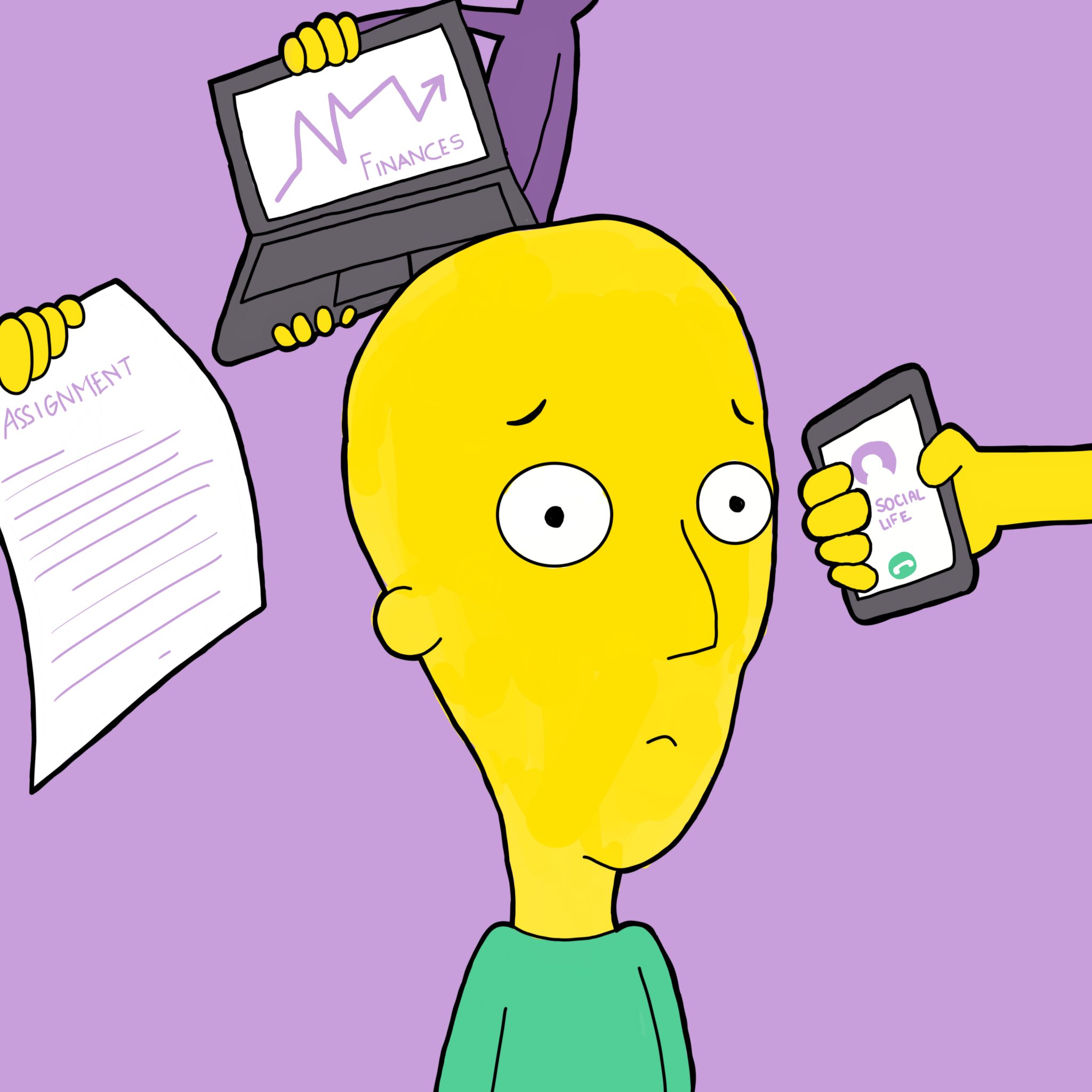Well-being study finds work burnout at an all-time high

A well-being study from the YMCA of Three Rivers found that employee burnout is at an all-time high in Waterloo, Guelph and Stratford.
According to the study, “when asked how frequently they have experienced burnout, 73% of respondents reported that they have experienced burnout at least sometime in the last three months.”
Jessie Zhan, an associate professor at Wilfrid Laurier University who studies work stress and employee well-being, defined burnout as “a chronic syndrome. It is a reaction to experiencing stress for a long time.”
According to Zhan, burnout has three dimensions at the individual level.
“The first one is emotional exhaustion. People feel they are exhausted because of work. In the morning they do not want to get up to work. They feel like they are at the end of the road,” Zhan said.
The next dimension goes beyond the individual’s experience of themselves and impacts their experience of others in the workplace.
“The second dimension is depersonalization, meaning that when people feel high levels of strain when they are burned out, they do not view other people at work as human beings. They tend to view them as objects,” Zhan said.
The second dimension of burnout also impacts employee-customer relationships.
“They do not truly and sincerely care for their customers or clients, they just want their job done, that’s it. They are not going to invest any emotional resources.”
The third dimension through which individuals are impacted by burnout has to do with their confidence levels.
“The last dimension of burnout is self-accomplishment … for people who are experiencing burnout, they do not feel they can actually accomplish the task. They do not feel they are effective, as a person and as an employee,” Zhan said.
Research has also shown, according to Zhan, “a positive correlation between burnout and depression, as well as some other physical and mental health outcomes.”
Another mental health outcome associated with burnout is increased anxiety, and physical outcomes include somatic complaints like headaches or bodily pain.
For organizations, negative outcomes in individual employees can result in negative outcomes for the company at large.
“One thing is, given the health issues, there will be more withdrawal behaviours. People may be absent, people may have higher turnover intentions, and of course, the performance implication can manifest at the organizational level as well.”
Zhan also said that research has shown burnout is contagious in nature.
If one person begins to experience burnout, it becomes more likely that others will report similar experiences. As Zhan noted, “this makes the issue even worse.”
Burnout may infect individuals without them noticing. According to Zhan, “it can be happening in an unconscious manner … we do not really realize that we are impacted by others, but that just happens.”
Zhan also explained how the COVID-19 pandemic has played a role in increased levels of burnout.
Not only has the pandemic introduced “lots of new stressors,” but it has also made pre-existing stressors more severe.
Lockdowns have forced people to work from home, which has led to a lack of flexibility and preparational failures from employees.
When employees are not ready for such an adjustment a lot of challenges can arise in effectively managing the boundary between work and life.
“When they work from home, they need to be a parent, a spouse, and a worker,” said Zhan.
These are complicated roles in themselves and only become more complicated when conducted under the same roof.
Zhan noted that this balancing act can lead to feelings of inadequacy in those spheres, “they feel they cannot be an effective worker, they cannot be an effective parent.”
Another medium through which the COVID-19 pandemic has impacted employee burnout is a lack of social and emotional support.
“You’re there by yourself in front of your computer, it’s not like the past where you could just stop by at a colleague’s office and have a casual chat,” Zhan said.
“Nowadays, if you have a meeting, usually there is something to talk about … people do not have causal informal conversations like they do in the workplace.”
Zhan explained that there are lots of things individuals and companies can do to remedy burnout.
At the individual level, “people really need to look at what the causes of their stress are, whether they are something that can actually be fixed by investing effort or they’re something that is out of our control.”
There are two types of coping mechanisms that individuals can utilize to remedy burnout. The first is problem-focused and the second is emotion-focused.
Problem-focused remedies include “to plan better in advance, or set a boundary more explicitly with your family, as well as communicate with your supervisor and co-workers.”
Emotion-focused remedies should be utilized if an employee is feeling lonely or dealing with the work-life conflicts that arise from working at home.
One thing is to “always find some time for yourself.” Hobbies or anything that produces feelings of relaxation are activities that Zhan recommended.
Another emotion-focused remedy is to practice self-compassion.
“We need to be more positive and friendly and kind to ourselves rather than being hostile to ourselves,” Zhan said.
One approach to self-compassion is to “recognize limits, that we as human beings are imperfect, that’s what we are, that is not just yourself.”
At the organizational level, Zhan explained that research has shown remote work leads to increased feelings of pressure and expectation.
To remedy this, companies “can take a more active role in helping the employees to manage their stress,” Zhan said. Employers can help “set the boundary between work and life and be more supportive … providing flexibility if it is possible.”

